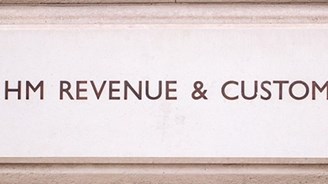Church academy land and buildings - Q&A

With the publication of conflicting guidance on the treatment of church academy land and buildings, what's the right way to address this potentially contentious issue?
Over the past few weeks a number of documents have been published that will cause auditors to look again at the Education Funding Agency's (EFA) recommended treatment of church academy premises occupied under a licence. If you have not seen these documents, it is strongly recommended that you obtain copies through your schools or the auditor's forum.
What is the EFA's view?
The question here is whether the right to use assets owned by (to simplify) the church, namely academy land and buildings, ought to be recognised on the balance sheet of the academy trust. Earlier this year, the Accounts Direction 2014-15 sought to clarify the EFA's view that, normally, they believe that the answer is yes.
What is the Church's view?
The view of the Catholic Education Service (CES) and The National Society for Promoting Religious Education (TNS) is that an academy trust ought not to recognise an asset in connection with a right to use church premises. Central to their 12 page rebuttal of the recommended Accounts Direction treatment is their view that the academy trust does not, ultimately, control the premises.
Who is right?
The decision as to whether an asset is reflected in the accounts of the academy trust is the responsibility of the trust's directors. As such, they will need to decide which side of the fence they sit on. This is echoed in further guidance published by the EFA earlier this month.
The EFA's argument centres on the 'probable' course of subsequent events (i.e. that the trust will, in all likelihood, continue to occupy the site for the foreseeable future) and, based on this probability, recognise an asset that reflects the future economic benefits expected to flow from the use of the property. However, where the holder of the title to the premises is telling the tenant that they do not control the premises - at least to any extent that would give them the right to recognise an asset reflecting the right to its use - many tenants are likely to find this a compelling argument!
Whilst I do have a personal opinion over which of the arguments I prefer; it isn't really my opinion that counts! Regardless of what the EFA or the CES or TNS or I think in this area, it is the judgment of the directors and the opinion of individual auditors that will ultimately determine the treatment seen.
What happens if no asset is reflected?
The EFA, within their additional guidance ask for 'enhanced disclosure' within the fixed asset and related parties notes. The CES, for example, have provided an illustration of what these disclosures may look like.
Non-recognition of an asset may however lead to the conclusion that, where the benefit of occupancy to the trust is reasonably quantifiable and measurable, the estimated open market rate rental should be reflected annually as 'notional' income and expenditure.
A question I have been asked more than any other in this area is 'what will the EFA do about it if no asset is included?'
I can only speculate here and cannot speak on their behalf. It seems likely that this will be something that will be flagged on data validation. Can the EFA be critical of directors and auditors for using their judgment? I would hope not in this instance. Will they criticise a lack of appropriate disclosure? They should.
Auditors must ensure that they fully document the basis of key judgments in this area and may also need to refer to it in the audit report, even where they agree with the treatment (see below).
If an asset is reflected, what value should be used?
This is probably the most difficult question of the lot as far as I can see. If the trust chooses to recognise an asset, it is recognising one that reflects the future economic benefits expected to flow from the use of the property (i.e. not the value of the premises).
In short, if they plan to use a depreciated replacement cost desktop valuation (of the premises) they might find the number in the accounts is about as materially misstated as £nil is (maybe more so)! It is also worthwhile noting that the disclosures in this area (regardless of legal ownership arrangements) are often poor and should be transparent as regards to the basis of treatment and valuation alike.
How do we change from what we did last year?
Whether the trust is showing an asset having previously chosen not to, or vice versa, the adjustment will normally be processed via a prior period adjustment.
What about the audit report?
There are a number of potential audit reporting scenarios that could arise from this issue in isolation. For example, even where the auditor agrees with treatment and disclosure and issues an unqualified opinion, they may feel that this issue is of such importance that it is fundamental to users' understanding of the financial statements and therefore include an emphasis of matter paragraph that draws users' attention to the relevant information presented and disclosed. Clearly, where the auditor disagrees with the treatment of the premises in the accounts, or is dissatisfied with the level of disclosure, the audit report may be qualified.
For me, it's a crying shame that a lot of auditor time and resource is being spent arguing over things like this, rather than focusing on where the real risk is, or adding some value back into the sector. Unfortunately, there appears to be no winners here.
To end on a more positive note, best of luck (and judgment) for the rest of the academy audit season.



